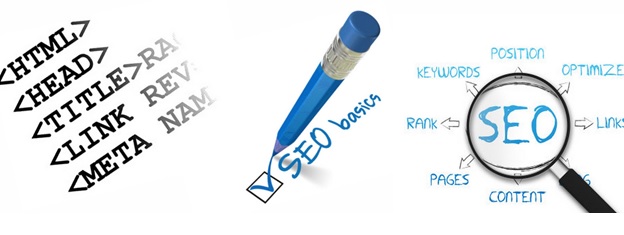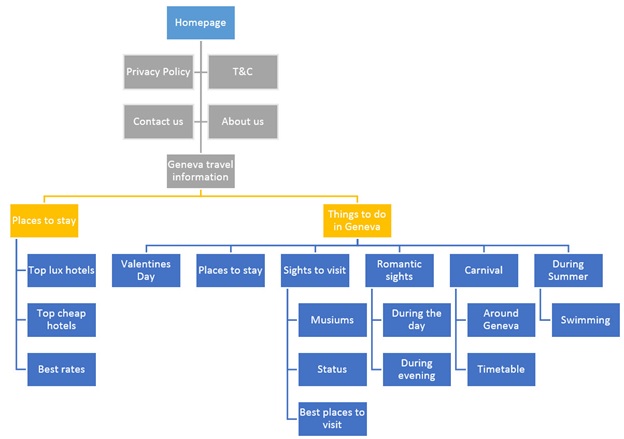SEO
Free SEO Analysis
SEO Services
Content Marketing Services
Local SEO
Link Building Services
Specialized SEO Services
PPC
REPUTATION MANAGEMENT
Free Reputation Management Analysis
Reputation Management Services
Review Management Services
Specialized Reputation Management Services
CEO Reputation Management
Brand Enhancement
Business and Directory Listings
Comprehensive Reputation Management Audit
SOCIAL MEDIA
Free Social Media Analysis
Specialized Social Services
WEB DEVELOPMENT
Free Website Analysis
Web Design Services
Mobile Development Services
Website Maintenance Services
Specialized Development Services
MARKETING AUTOMATION
Free Marketing Automation Analysis
Specialized Marketing Automation Services
Comprehensive Marketing Automation
INDUSTRIES
ABOUT DMA
SEO
How to Manage Technical Aspects of SEO Optimization Without Killing Your Content
Request a quote
Its Fast, Easy & Free
Executive Summary
- One of the most important things in SEO is to target the right keywords for your site to make sure that the people who land on it are interested in its content.
- You cannot expect to be successful in your SEO efforts without providing great user experience through things like quality content, website speed, design, mobile optimization, responsiveness and so on.
- One of the most important ranking factors that Google has set is website speed.

Ranking is one of the most important things for websites. This is why search engine optimization (SEO) techniques will always remain relevant. No matter how much you’d like to do other things, if your site is to succeed, it needs good SEO.
Even if you have the best website in terms of design and content, people aren’t going to buy anything from you if they can’t find your site in the first place. It would be terrible to waste all of the time and effort you put into your website simply because of the fact that you didn’t invest in SEO optimization that would allow you to rank better and get more of that valuable, organic traffic.
The problem is that many people don’t understand what SEO is all about, including bloggers, webmasters, and marketers. In this post, we will explain the essentials of SEO and help you understand the main purpose of this marketing technique.
On the other hand, a lot of people destroy their content with faulty SEO copywriting, as they’re unable to find a balance between doing the necessary optimization and providing the experience their customers need.
So before talking about anything else, let’s start by introducing some basic SEO concepts.
How SEO Helps and Why it’s the Best

SEO is one of the oldest online marketing techniques that has been adopted by many influencers, marketers, businesses, ecommerce stores, and anyone else who needs more online visibility and wants to achieve success with their website.
To be clearer, SEO is for people who want to focus their marketing efforts on their website. Having better SEO on your site means you will get more organic traffic, but what does this mean for you?
Organic Traffic is More Valuable

Organic traffic consists of people who land on your site through a web search by clicking on your website link. Simply put, when they search for something, they will click on the top results they get on Google, because few people ever go to the second search results page.
Unlike in pay-per-click (PPC) campaigns, people will not see any ads. They will want to check out your site on their own. To improve your chances of getting this kind of traffic, you need to get your site ranked as high as possible, and this is done through SEO optimization.
Potential customers will search for things they need the most, and it’s your job to optimize for the keywords they’re using to get your site in their search results. This is how you increase your chances of getting more organic traffic.
SEO Offers Long-Term Stability

Like PPC campaigns, there are many other paid methods or ad campaigns you can rely on to increase the number of website visitors. However, this is not a stable source of traffic for the long-term, and you will have to spend money constantly to keep it going.
Additionally, it’s far more difficult to attract meaningful traffic with paid ads. Not all traffic is valuable, as a lot of people will bounce off immediately and never return to your site because they aren’t that interested in what it has to offer.
Another weakness of paid traffic is that all of your visitors will drop after you stop paying. On the other hand, an SEO-optimized site will still get a lot of organic traffic even after you stop pushing aggressively with your optimization. It will be visible for a long time and stay in the top search results.
It's Not Only About Being Technical

SEO is a marketing technique that requires you to be technical and creative, as well to be able to drive traffic, increase your ranking, get higher domain authority and overall get a better online presence for your business. With proper techniques and steps over a long period of time, you can create a strong online presence that can bring you great results for a long, long time to come.
The ones who set the rules for proper SEO techniques are the people at Google, and if you do things right they will rank your site higher. These algorithms and rules can change every couple of years and you need to keep yourself updated to make sure that you are doing everything right.
Why SEO Optimization is Important

The majority of web traffic that people drive to their websites comes from search engines. Some of it also comes through social media but search engines still rule. If a potential consumer needs something, he or she will likely open up their search engine and type what they are looking for.
This is how the web research process starts for most people, meaning that there is a great opportunity in this for businesses to improve their results. It doesn’t matter if you are a business, blog, non-profit organization or you run a personal website, you need to take advantage of these opportunities to get more web traffic.
One of the most important things in SEO is to target the right keywords for your site to make sure that the people who land on it are interested in its content. For example, you can optimize for the wrong keywords and get a lot of traffic, but the people who click on your page will see that it’s not relevant for their search and simply bounce off.
You cannot mislead people in this way if you want to see good results; you need to find the right keywords and optimize for them so that when someone clicks on your site, they get what they are expecting. This is how you will increase the chances of them converting into customers or performing some action while on your website.
Simply put, if you make your site visible for the wrong reasons, you might be able to drive traffic, but you won’t be able to do much with it. There are a lot of examples of SEO practices being able to provide websites with the results they need.
A lot of people will tell you that there are many alternatives for SEO, but the fact is that this marketing technique has the best ROI tells you how much you need it.
User Experience and SEO go Hand in Hand

One of the biggest obstacles that people have with SEO is to create quality content that will appeal to and engage users while at the same time taking care of the necessary technical aspects that proper SEO requires. In the past, people neglected user experience that their content provided and simply focused on SEO.
This has led to terrible results in term of user experience, but they were able to rank their websites higher. No matter how good of an idea this might seem, it really isn’t because people wouldn’t engage with a site and perform any actions.
This is why Google has emphasized the importance of UX as well, and it’s no longer possible to get a good website rank without providing proper user experience to visitors. You can no longer simply spam keywords within your content to get ranked higher, as UX and SEO are closely connected.
Simply put, you cannot expect to be successful in your SEO efforts without providing great user experience through things like quality content, website speed, design, mobile optimization, responsiveness and so on.
The separation of these two has led to a lot of conflict and abuses in the past, and this is why Google has decided to bring these two together and allow quality sites to rank high, not just the ones that did keyword research, included the keywords at the right places and added meta tags.
With this in mind let’s get to the important technical aspects of SEO related to your content and how you need to approach each one of them properly, so that you provide both good user experience and perform good SEO measurers.
8 Technical Aspects of SEO Connected to Your Content
1. Website Speed

The time needed for a user to open your site or your page is your website speed and it’s very important. You might be wondering how this is connected to content, but it is in great measure. If it takes a long time for a user to access your content, it will directly ruin their experience.
When it comes to website speed from the SEO perspective, you need to remember these two things:
One of the most important ranking factors that Google has set is website speed. This was officially announced back in 2010 and it is crucial. If your website is slow, you will not be able to rank high as Google wants to make sure that fully operational sites are visible and provided to searches.
People will leave your site if it takes a long time for it to load. You might have good content on your site and offer a lot of things that people might find valuable, but if they have to wait for 30 seconds for some page to open, you’ve lost them forever. A slow site means higher bounce rates and an inability to convert visitors to customers.
The bottom line is that your rankings will be lower with a slow website and that your content won’t be even viewed by visitors. This is why you need to make sure that your website speed is good. You can use Google’s PageSpeed Insights tool to check your site’s speed and make sure that you’re on point.
2. Website Structure

A properly structured website is an important factor in SEO. The architecture needs to be clean, intuitive, simple, and easily understood, so that users can navigate through it easily. Additionally, a clear architecture allows the search engine to crawl easily through it.
The crawler needs to understand your site so that it can rank it, and the more easily it’s understood, the quicker it will be ranked and on a higher position. Link all of your main content pages on your home page so that users can find what they are looking for and the crawler can understand what you offer to visitors.
Simplicity is the key here. Avoid adding many ads or confusing navigation. Implement clear URL’s and logical paths and whenever you update the architecture of your website make sure that you implement a 301 that leads from your old page to the new one you added.
This is how Google will give you more SEO points and how your website visitors will find their way easily through your site and explore all of the content that you have to offer.
3. Flash Players

A lot of people like using flash on their website, but this plugin has become outdated, at least when we’re talking about SEO. There are too many problems that it can cause and decrease both user experience and your overall SEO score. There are three main reasons why you should avoid using flash players:
Search crawlers cannot recognize them as they are incompatible. If a crawler cannot recognize all of the elements on your site, it will give you a lower score overall.
Flash players decrease the performance of your web page. They require a lot of resources and your page load speed will be drastically reduced.
If your visitors don’t have updated flush plugins, they won’t be able to see one. This will diminish their experience and make your website look poorly designed.
4. URL Address

In the past URLs were not so important for SEO, as they were an incoherent set of letters and numbers, but today URLs carry great value. URLs show up in all search results and they strengthen the value of the keywords that you use.
The result of your website that appears to people when they search using relevant keywords is formed mainly from your URL. Simply put, the result that appears in searches is greatly impacted by the URL and it can also affect someone’s decision to click on it and view your content.
Remember that Google will shorten URLs that are long to make them clearer. For each URL, make sure that it contains sensible information related to the title of your content or its context. This is how you can encourage people to click on your content, as you will give them some information on what it’s about with the link itself.
5. Unique Content

One of the most important technical aspects of SEO is to MAKE SURE that your content is unique. In the past, people abused content by copying from other websites and simply adjusting their keywords. This is how they were able to rank better while providing good content that was written by someone else.
Google understood that this wasn’t fair to others that worked hard on creating their own content and that’s why they enforced the biggest ranking penalizations for duplicated content. If you have duplicate content, you can rest assured that it won’t be visible to anyone and that your website will suffer a lot.
This is because you are tricking users and offering them someone else’s work. Each piece of content needs to be unique, offer a different perspective and a personal touch. Your content needs to be focused on website visitors and not on tricking Google to rank your site better. This is why you should check Google’s content guidelines to make sure you don’t get penalized.
6. Content Structure

Now let’s get to the content itself. As you might already know, content is the most important aspect of SEO. It plays the biggest roles in determining whether Google will reward your site or penalize it. Like your website structure, your content structure needs to be organized properly.
At the moment, Google favors posts that have a lot of images, subheadings, bullets, numbered lists and most importantly, unique content. You need to make sure that you have all of these things, as well as good links that work, no grammatical errors, and a proper structure.
Make sure that you have an introduction, headings, subheadings and a conclusion. This is the clearest form Google favors. At the same time, bear in mind that the trend of short posts has died. At the moment, content that performs best is 1500 words long.
Google is pushing websites to create meaningful posts that have valuable information, images that can engage readers further, videos, links that lead to valuable resources, charts, and researched information based on facts. Not only will this help you improve your SEO, but it will also make people want to read your posts and make them further engage with your brand online.
7. Keywords

Keywords are very important for your content. All of your content needs to contain them, regardless of whether we are talking about blog posts, homepage information or product descriptions. Still, keyword stuffing is something that you should avoid doing and you need to add them in the most natural way possible.
For example, a certain post should include a few keywords within the body, one in the introduction and one in a heading, nothing more. Don’t look to repeat keywords and ruin your writing as well as the structure of your piece of content.
Additionally, before 2008 a lot of people did keyword stuffing by inserting hidden keywords which weren’t visible in the frontend design. Google penalizes this heavily, even if you just have one, so make sure to check your code and clear it of hidden keywords if you have any.
Make sure that your keywords are related to each other and that they fit the whole piece of content contextually. For example, you cannot write a blog post about food and include keywords about digital marketing. Keywords are very important, because they point out important things to people that they might be interested in based on their search.
They are a bridge that connects the content on a page and the information the person is looking for. For example, if a person is searching for “the best NBA players” they will get a blog post that is optimized for these keywords as a result, even though the whole website has different keywords.
8. Optimizing Images

It’s possible to use some older images and re-optimize them. In my experience, however, it’s better to create brand new visual content and optimize it from the beginning. Make sure that the name of the file for your image is descriptive and unique. Additionally, it’s important to make sure that the name of the image contextually represents what’s on it.
All of the images that you put on your site have their titles and alt tags. These are the essential HTML elements which provide the SEO information of an image. The title of your image gives them an adequate name, while the alt tag describes the image.
It’s generally good to include at least some matching words in these two. Additionally, you can include keywords found in your articles within the images that you use for them. Google analyzes images by looking at the content that surrounds it and that’s how you will make it easier for the crawler.
All of these things will create a stronger SEO structure that will rank images and the whole content much higher. On top of that, your posts will be more engaging, as they will have images that are relevant to the topic you are covering. Adding images to pages increases your chances of ranking better, so make sure to do this.
Conclusion
With these technical SEO approaches you will be able to rank your site better. Not only this, but your content will be uncompromised and relevant, while at the same time fulfilling all of the basic SEO requirements. Remember that organic traffic is very valuable and that you can explore many opportunities through it.
Our Sales team